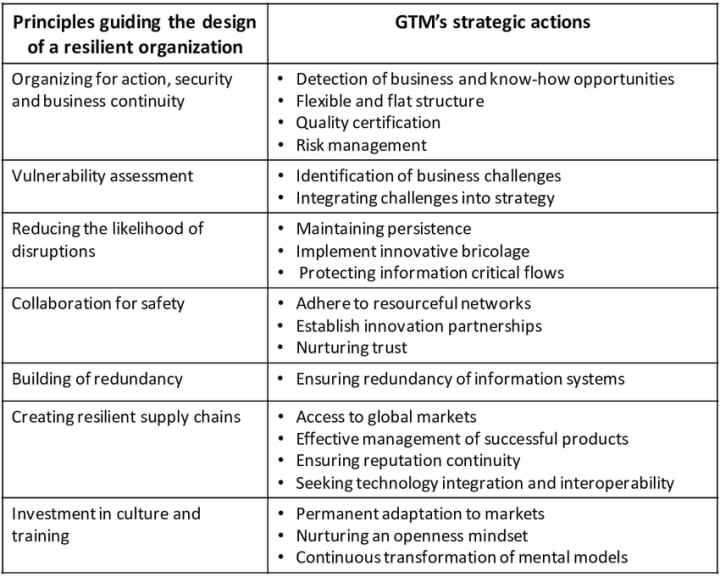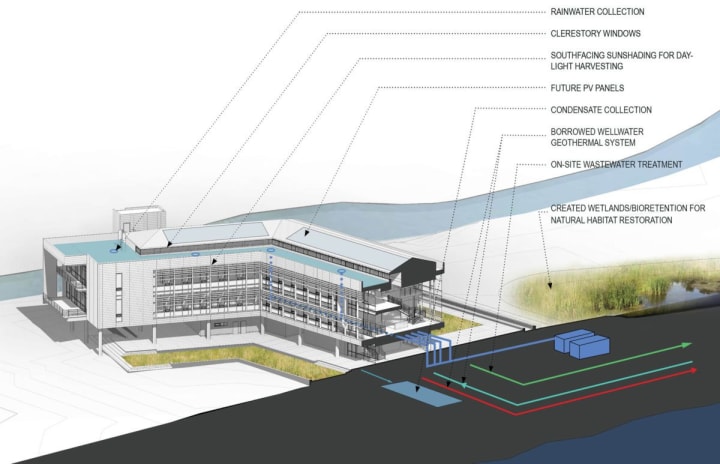Enhancing Structural Resilience With Robot Structural Analysis
How to use robot structural analysis to create more resilient design?

In today's rapidly changing world, ensuring the resilience of structures has become increasingly crucial. One powerful tool that aids in achieving this resilience is Robot Structural Analysis.
This software solution enables engineers and architects to analyze and optimize structural designs, enhancing their durability, safety, and ability to withstand various stresses and challenges.
In this article, we will explore the concept of Robot Structural Analysis, its role in creating resilient designs, and the benefits it offers.
What is Robot Structural Analysis?
Robot Structural Analysis is a sophisticated software program that assists engineers in analyzing and simulating the behavior of structures, ranging from buildings to bridges, towers to stadiums.
It employs advanced algorithms and mathematical models to evaluate structural performance under different loads, such as wind, seismic activity, and dynamic forces.
Also Read this complete guide on - Robot Structural Analysis Design Modeling Solutions
By leveraging this software, engineers can gain valuable insights into how structures respond to external forces and make informed decisions to optimize their design.
Enhancing Resilience through Robot Structural Analysis
Resilient Design Principles
Resilient design principles serve as fundamental guidelines for creating structures that can adapt and recover from disruptive events. By incorporating these principles into the design process, engineers can enhance the resilience of structures, making them better equipped to withstand unexpected challenges.
Let's explore some key resilient design principles:

Redundancy: Building Redundancy for Enhanced Safety
Redundancy refers to the incorporation of backup systems or components within a structure to maintain functionality even if some elements fail. By designing with redundancy in mind, engineers can create structures that are more resilient to disruptions.
For example, in a building, redundant systems may include multiple sources of power, backup communication channels, and redundant structural support elements. These redundancies ensure that even if one system or component fails, the structure can continue to function safely.
Adaptability: Designing for Changing Conditions
Adaptability is a crucial aspect of resilient design. Structures should be able to adapt to changing conditions, such as evolving user requirements, environmental factors, or unexpected events.

By considering adaptability during the design phase, engineers can create structures that can be easily modified or repurposed without compromising their structural integrity. This can involve flexible floor plans, modular components, or systems that can be upgraded or modified as needed.
Robustness: Creating Strong and Durable Structures

Robustness focuses on creating structures that are strong, durable, and capable of withstanding various stresses and forces.
By selecting appropriate materials, designing structural systems with sufficient load-bearing capacity, and considering factors like seismic resilience, engineers can ensure that structures are robust.
This principle involves analyzing the potential risks and designing to mitigate them effectively.
Sustainability: Balancing Environmental and Social Considerations

Resilient design also takes into account sustainability, which involves minimizing the negative environmental impact of structures while promoting social well-being. Sustainable design principles encompass energy efficiency, the use of environmentally friendly materials, waste reduction, and consideration of the structure's life cycle.
By integrating sustainability into resilient designs, engineers can create structures that not only withstand disruptions but also contribute positively to the environment and community.
By incorporating these resilient design principles into their projects, engineers can create structures that are better equipped to face uncertainties, adapt to changing circumstances, and recover from disruptive events.
Leveraging tools like Robot Structural Analysis enables engineers to analyze and optimize designs, ensuring that these principles are effectively implemented, resulting in more resilient and safer structures.
Incorporating Resilient Design Principles with Robot Structural Analysis
Robot Structural Analysis plays a pivotal role in incorporating resilient design principles into structural projects. It allows engineers to simulate different scenarios and assess the behavior of a structure under diverse conditions.
By analyzing the responses and stress distribution within the model, engineers can identify potential weak points and develop appropriate solutions to enhance resilience.
Explained guide about - Design of a general resilient robotic system based on axiomatic design theory
This software empowers them to optimize the design by evaluating various materials, configurations, and reinforcements, ensuring the final structure is resilient and robust.
Examples of Resilient Design Solutions

Robot Structural Analysis has been instrumental in developing resilient design solutions across a wide range of structures.
For instance, in earthquake-prone regions, engineers can utilize the software to analyze the behavior of a building under seismic forces, assess its performance, and make necessary modifications to improve its resilience.

Similarly, in coastal areas, structures can be designed to withstand extreme wind loads and potential storm surges by leveraging the capabilities of Robot Structural Analysis.

The software's versatility allows engineers to tailor solutions to specific challenges and create designs that are resilient and adaptive.
Conclusion
In a world where resilience is paramount, Robot Structural Analysis emerges as an invaluable tool for engineers and architects.
By harnessing its capabilities, professionals can integrate resilient design principles into their projects, leading to structures that are better equipped to withstand and recover from unexpected events.
The ability to simulate and optimize designs using Robot Structural Analysis empowers professionals to create more durable, safer, and resilient structures. By embracing this technology, we can foster a built environment that adapts and thrives in the face of adversity.
You would love to read these article as well
About the Creator
Matt Sharon
A professional content writer. Having years of experience in Technology, health, finance, and construction and real estate field. Writing is my passion and I love to play with words Confidently.






Comments (1)
Great article! The concept of enhancing structural resilience with robot structural analysis is fascinating and holds tremendous potential for the field of engineering.